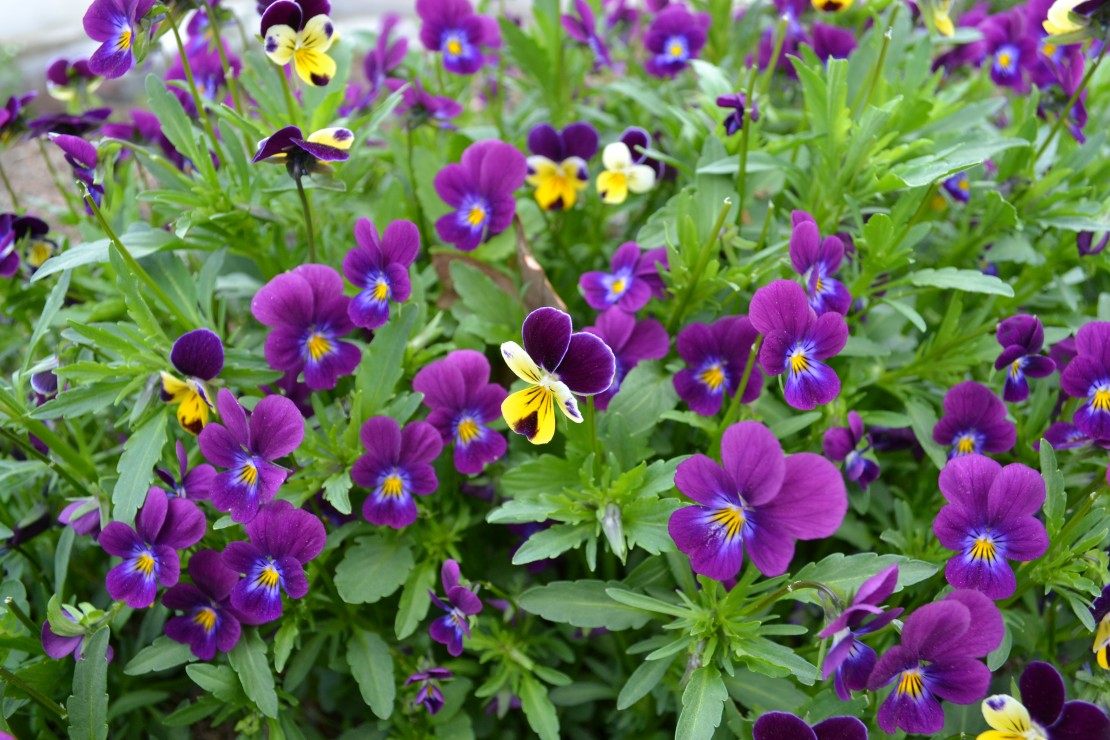
Creating a Local Materia Medica with Violet
Modern herbalists are fortunate to have access to a vast array of herbs from far corners of the globe. Herbs and spices have long been a significant driver in world trade, and while this looks a bit different in the 21st century than it did in the 17th, we are still often intrigued most by the plants that grow far from our homes. I myself have swooned at the prospect of wild blue lotus and holy basil from India or roses from Bulgaria, and these plants no doubt are worth the adoration they elicit.
But are the wild roses at the edge of the farm field or the basil in my garden any less valuable? Once the whirlwind romance stage of my journey as an herbalist settled into deep and abiding love, I began to realize that the connection I sought could really be achieved by focusing on the plants at my feet. The native plant inhabitants, the wild weeds, the farmyard denizens, the cultivated garden herbs, and the trees—there are plant allies growing freely everywhere I turn.
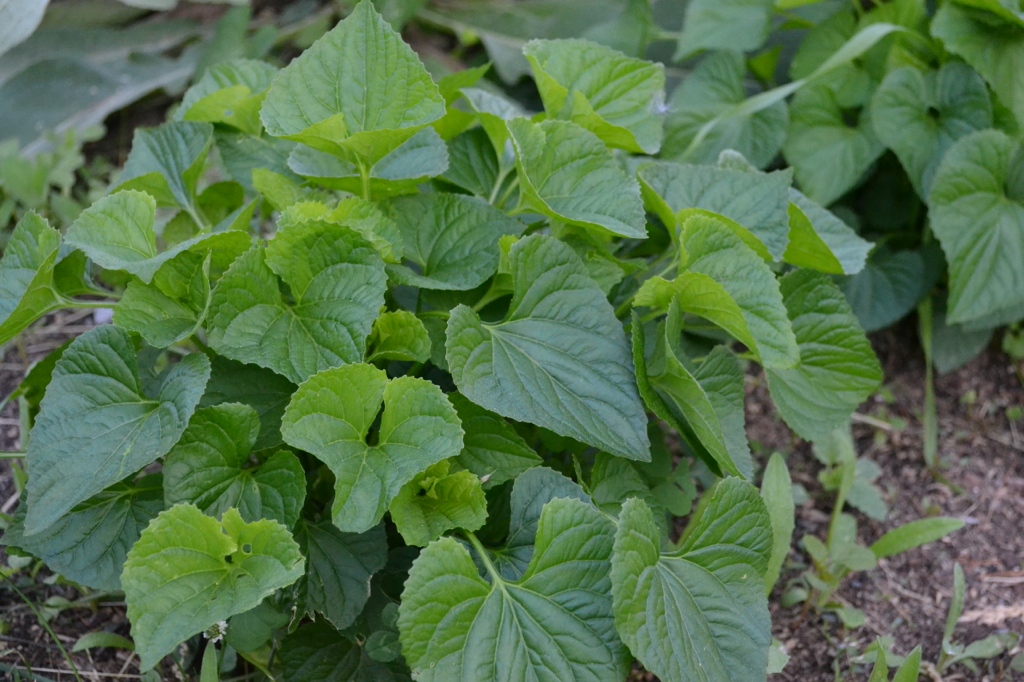
It is the green inhabitants of my own land with which I desire intimacy. I am fortunate that on less than 1.5 acres of land, I have two hawthorn trees, a wild cherry tree, many white pines and spruce, an oak tree, cedars, apple trees, and an enchanting fringe tree. These were here when I moved onto the property many years ago.
Nettles, catnip, and motherwort showed up in my garden one year and have made themselves welcome ever since. St. John’s wort grows in the horse pasture, dandelions wherever they darn well please, and yarrow has established itself quite well next to our big hickory tree—in the “shade” garden, of all places. My herb gardens are a veritable ode to the mint family—no apothecary is complete without its members—as well as other plants I simply could not be without. The icing on the cake? Just last week I found usnea growing on my flowering cherry tree.
So this year, I’m reigning in my wild love affair with plants from afar to focus on these friendly allies to create a local materia medica. It is a way for me to go deeper with the familiar instead of spreading myself thin with the allure of the exotic. Each month I’ll be profiling a backyard plant—habitat, botany, energetics, uses, and other observations—and compiling a materia medica with pressed plants, sketches, notes, and photographs. Come along for a glimpse! This month, I’m focusing on creating a local materia medica with violet!
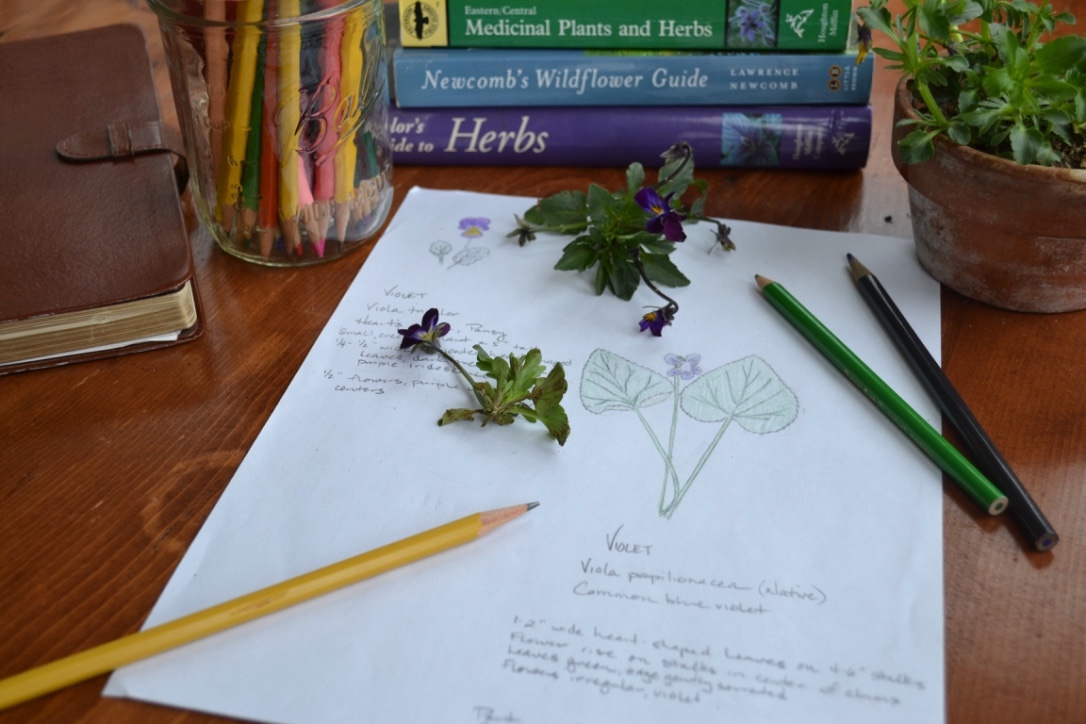
Backyard Plants: Creating a Local Materia Medica with Violet
Then let me to the valley go, this pretty flower to see;
That I may also learn to grow in sweet humility. – Jane Taylor
Getting Started with Violet
On the way to our new house fifteen years ago, my husband indulged my glee when we drove past a roadside flower and herb shop. I arrived on our new land with a lavender plant and a pot of violets, the former homeowner laughing as she said, “Oh, you’ll have plenty of those.”
Indeed. Violets were here long before I arrived and continue to make themselves welcome hither and yon. I can’t muster the gall to weed violet from my carefully cultivated garden beds, so she sits fat and happy in some of the best soil on the land. It’s no surprise then that violet prefers organic-rich, moist but well-drained soil in full sun or part shade. Grieve suggests a good medium sandy soil—which just happens to be exactly what I have (Grieve, 1931/1971).
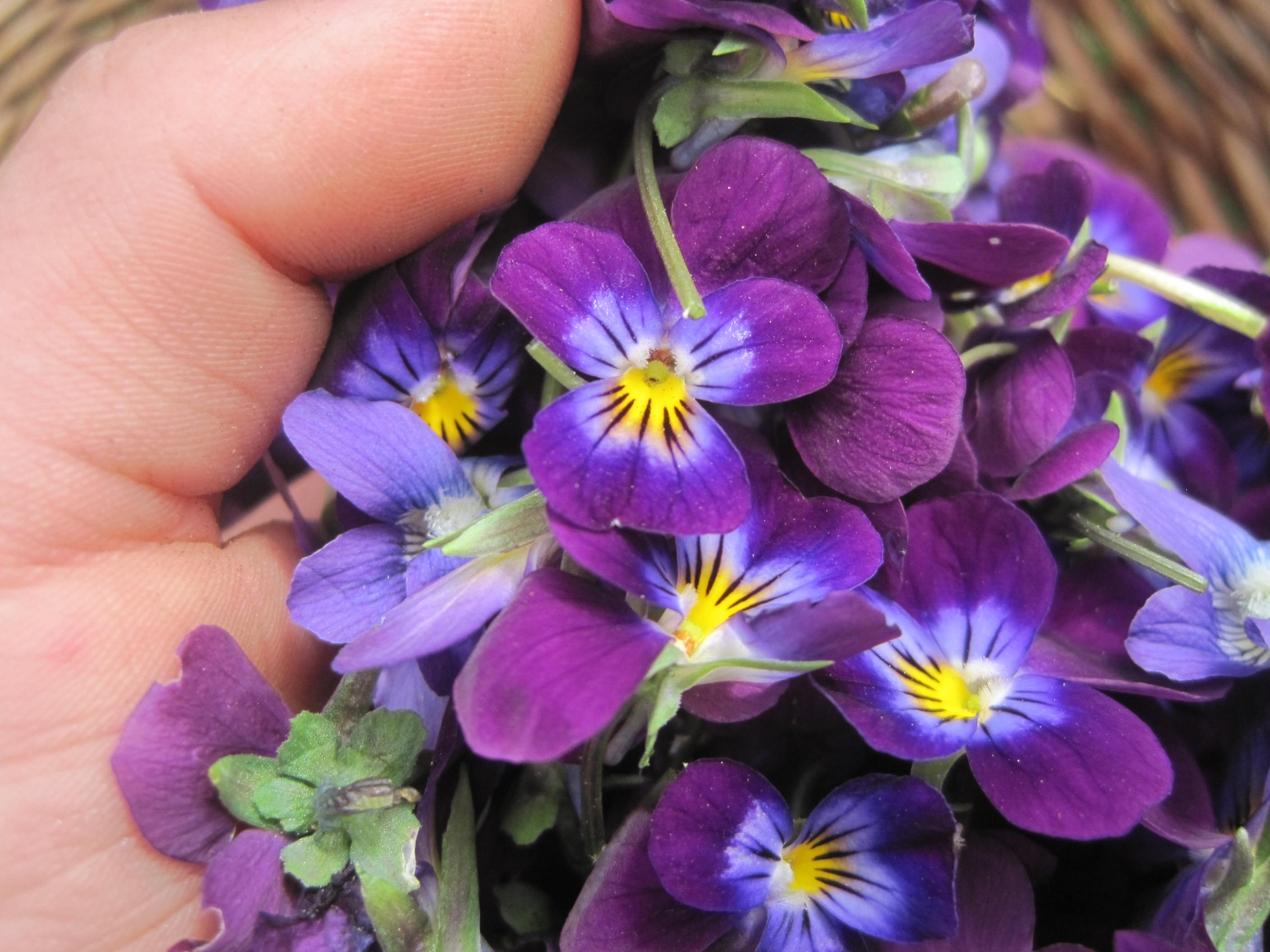
Identifying Violets
There are many species of violets, and they can generally be used interchangeably. Sweet violet (Viola odorata), which has a very sweet smell indeed, is native to Europe. The violets on my land include heartsease (V. tricolor), also native to Europe, and common blue violet (V. papilionacea or V. sororia), native to North America—both of which have little scent. V. odorata and V. papilionacea both have simple, basal, heart-shaped leaves and five-petaled blue-purple or white flowers. V. tricolor, parent to the garden pansy, has simple, alternate toothed leaves and five-petaled flowers with purple, white, and yellow markings, perhaps giving the impression of a sweet little face.
Violet flowers are bilaterally symmetrical, with two upper petals, two lateral petals, and a lower spurred petal (Reznicek et al., 2011). The American Violet Society has a helpful online dichotomous key to help with identification of Viola species.
Of particular interest regarding violet is that many species produce flowers in both spring and fall. The velvety blossoms that we see in spring are the chasmogamous flowers, whose colors (and scent, in some cases) attract pollinators.
The inconspicuous cleistogamous flower develops at ground level and is self-pollinating, opening only to drop its seeds directly into the soil. The spring chasmogamous flowers in some species of Viola are also self-pollinating (Culley, 2001), although in the case of V. papilionacea, the spring chasmogamous flowers are sterile. It appears that many violet species have evolved multiple fail-safe reproductive measures, in addition to spreading by rhizomes.
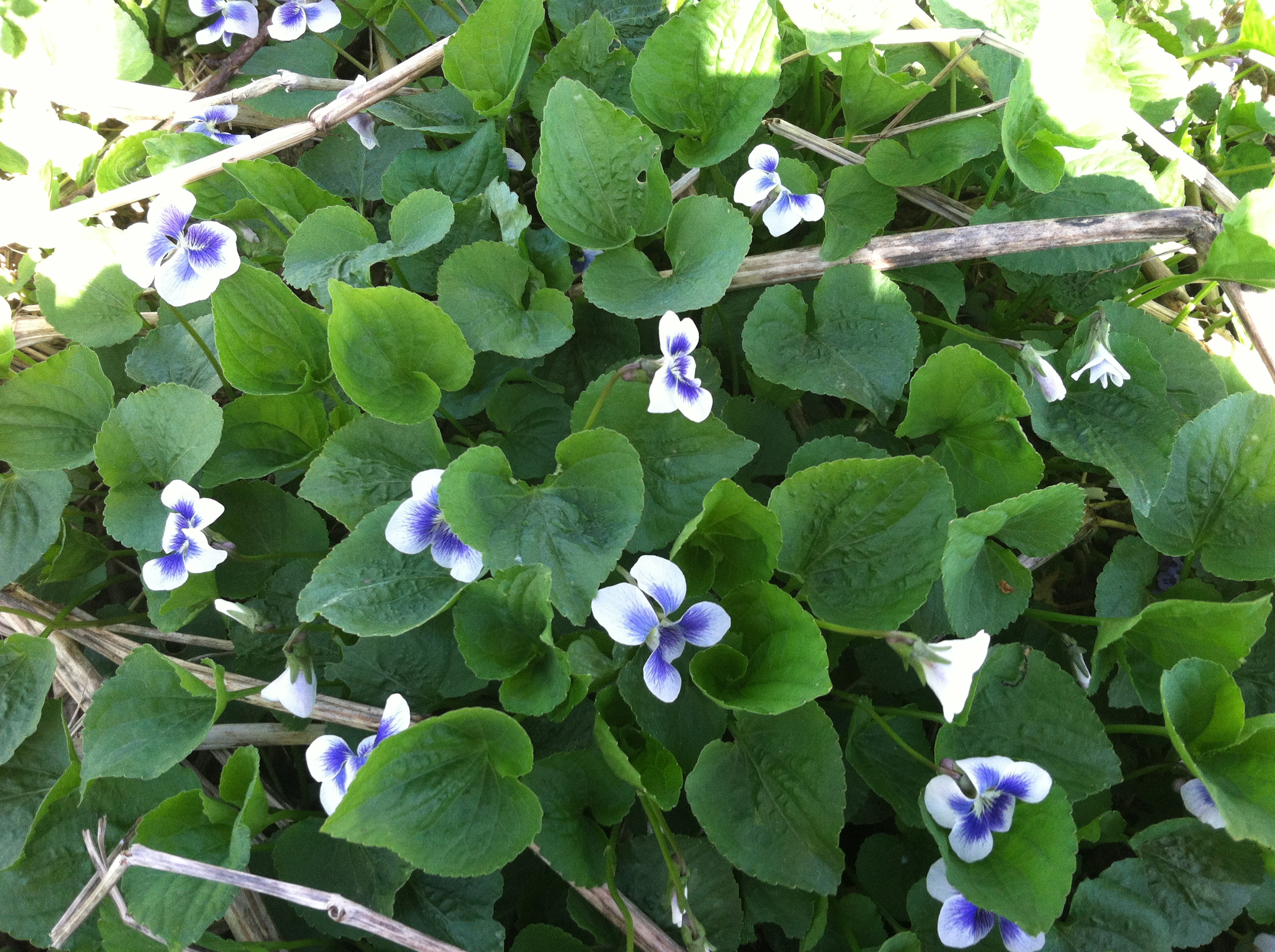
My Experience with Violet
Don’t mistake violet’s diminutive size and gentle flowers for weakness—she may be shy, but she is a hardy soul. I’ve found her blooming in mild Februaries here in New England.
Violet has a very sweet, tender manner as well and an affinity for the heart. The first time I sat in a patch of spring violets with intention, I was overcome with a sweet, light, airy, playful joyfulness and openness of heart. Envision the slow unfurling of violet’s tightly curled tender new leaves to their open heart-shape.
Violet uplifts the heart, and can be very supportive for opening (while still protecting) the heart and assuaging heartache and grief. Herbalist John Gerard (c. 1545-1612) said violet “comforteth the heart and other inward parts” (Dow, 1982). Violet flower tea or a violet glycerite can be a lovely way to work with violet for this purpose.
Violet also calms—both emotionally and physically. Gerard said of violet, “It has power to ease inflammation, roughness of the throat” (Grieve, 1931/1971). Violet’s cooling energy and mucilage provides welcome relief to hot, irritated states in emotions and tissues, be they external or internal—e.g., intense anger, a skin wound, or an irritated and inflamed throat.
During a recent bout with a sore throat, violet tea was my constant ally for soothing the throat irritation that would have otherwise caused me to cough and inflame the throat tissues further. Herbalist jim mcdonald also points out that violet’s mucilage can help moisten dry mucus in the lungs, enabling expectoration (Mcdonald, n.d.).
A poultice of the leaves can provide welcome relief to wounds and stings.
An infusion of the native V. papilionacea was used as a spring tonic by the Cherokee people, who also consumed the cooked leaves and stems as a green vegetable (Moerman, 1998). Violet is rich in vitamin C, as well as calcium and magnesium (Wood, 2008).
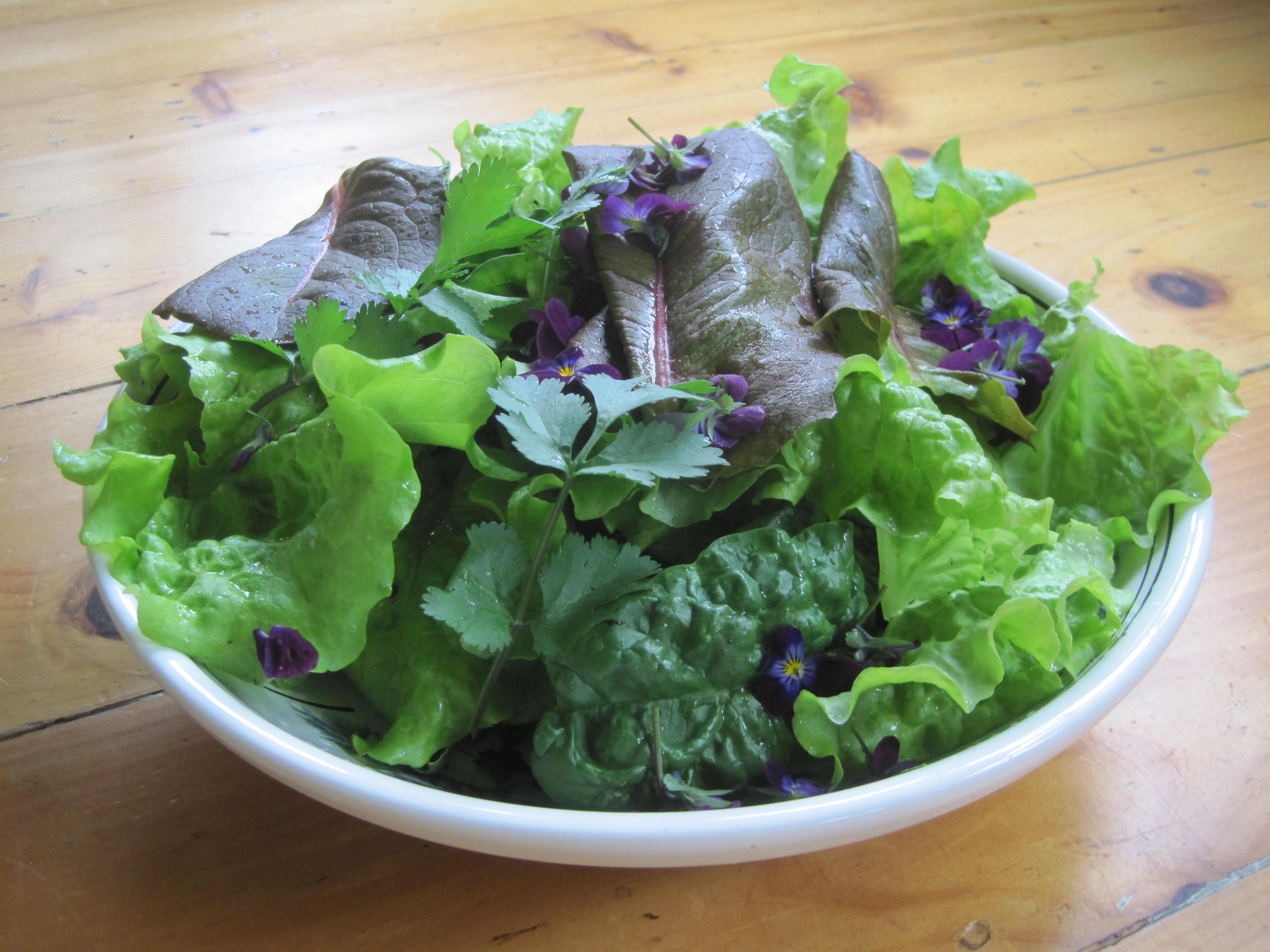
As a wild green, it is a valuable and nourishing addition to the diet—particularly after a long winter. Violet can be enjoyed in drinks, soups, or salads. Both the violet flowers and tender young leaves have a mild flavor, and the flowers add a touch of sweetness. I personally love the mellow green taste of violet infusion (I use both leaves and flowers for this) and savor the addition of violet leaves and flowers to my salads and pestos. Violet leaf soup is another enticing option.
Violet green juice is a simple and energizing way to include violet leaves in your diet. Seek out fresh spring violet leaves or the new leaves produced by violet plants throughout the summer for this drink. They will appear lighter in color and be sweeter and more tender than the older leaves.
Violet Green Juice
Inspired by Sage L. Maurer
1 large handful of spring or new violet leaves
1 cup water
- Wash violet leaves
- Combine with water in blender
- Blend thoroughly until leaves are completing macerated into a smooth green juice.
- Drink and feel energized by the green goodness!
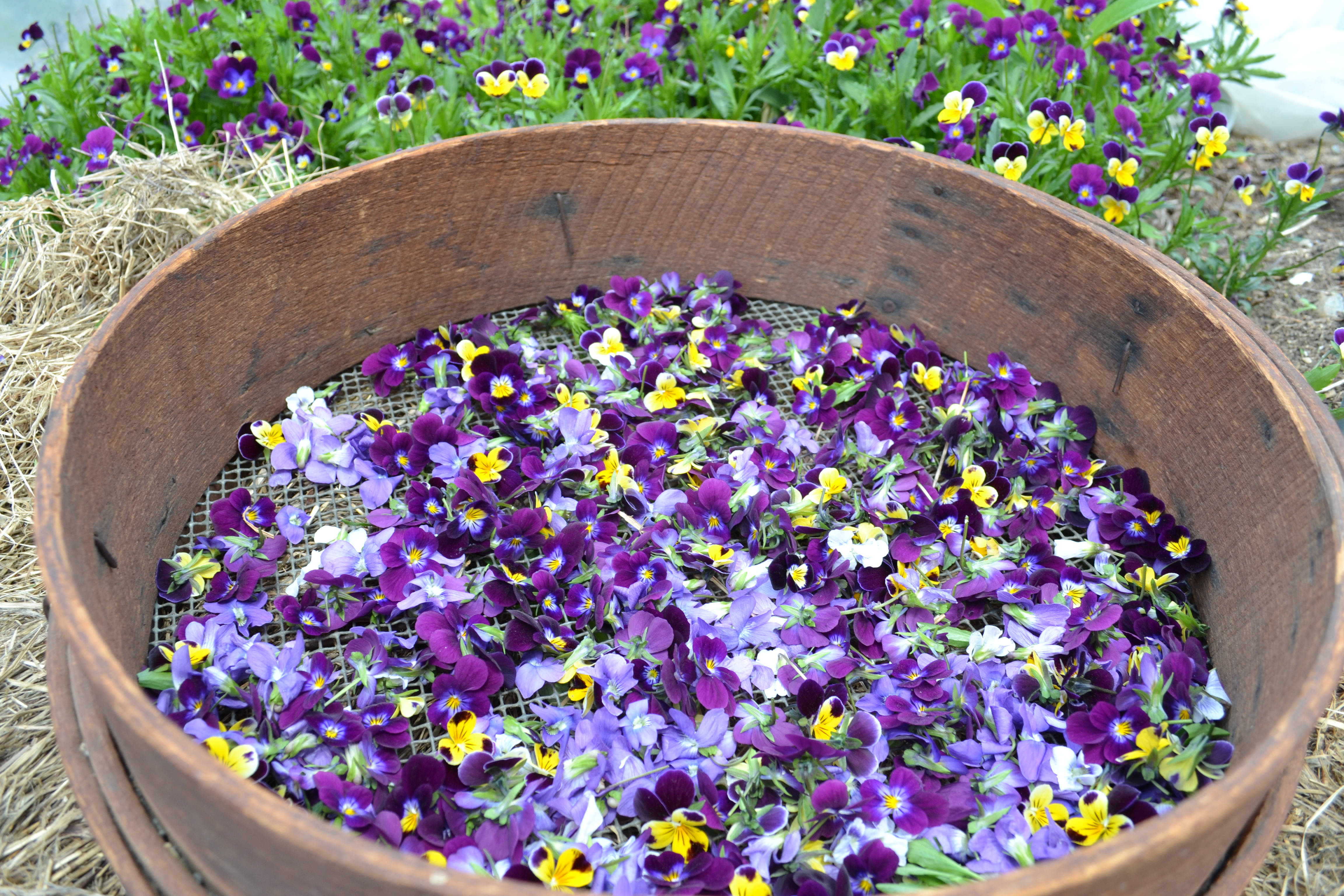
Keep in mind that due to its moistening mucilage, violet can have a mild laxative effect, so it’s best not to guzzle quantities of infusion or green juice—start with smaller amounts.
Violet is also used therapeutically for lymphatic congestion and swollen glands due to its affinity for the lymphatic system, its ability to dissolve hard growths, cysts, and lumps (Wood, 2008). Wood refer to violet’s use for cancer, particularly cancer associated with the breasts, lungs, lymphatics, and skin (Wood, 2008). I have not worked with violet in this capacity, but these two sources are a good place to start for more information.
In addition, Robin Rose Bennett’s The Gift of the Healing Herbs and Judith Berger’s Herbal Rituals have particularly lovely write-ups on the energetics and therapeutic uses of violet.
Start Building your Materia Medica with these free pages!
Interested in creating your own local materia medica? You can find more about violet and many other backyard plants in our monograph database in The Herbarium!
REFERENCES
Chevallier, A. (2000). The encyclopedia of herbal medicine. New York, NY: DK Publishing.
Culley, T. (2001). The natural pollination of violet flowers. Retrieved from http://americanvioletsociety.org/VioletGazette/VioletGazette_V2_1_P5.htm
Dow, E. (1982). Simples and worts. Topsfield, MA.
Go Botany. (n.d.) Viola key for fruiting and cleistogamous flowering material. Retrieved from https://gobotany.newenglandwild.org/dkey/viola-key-for-fruiting-and-cleistogamous-flowering-material/
Grieve, M. (1931/1971). A modern herbal. Retrieved from https://www.botanical.com/botanical/mgmh/v/vioswe12.html
Moerman, D. (1998). Native American ethnobotany. Portland, OR: Timber Press.
Plants for a Future. (n.d.). Viola odorata – L. Retrieved from http://pfaf.org/user/plant.aspx?LatinName=Viola+odorata
Plants for a Future. (n.d.) Viola tricolor. Retrieved from http://www.pfaf.org/user/plant.aspx?latinname=Viola+tricolor
Reznicek, A.A., Voss, E.G., Walters, B.S. (2011). Michigan Flora Online [Web]. University of Michigan. Retrieved from http://michiganflora.net/genus.aspx?id=viola
Wood, M. (2008). The earthwise herbal: A complete guide to Old World medicinal plants. Berkeley, CA: North Atlantic Books.








